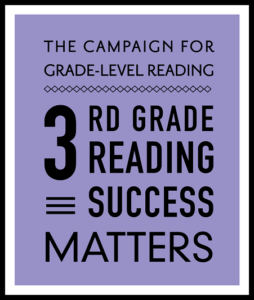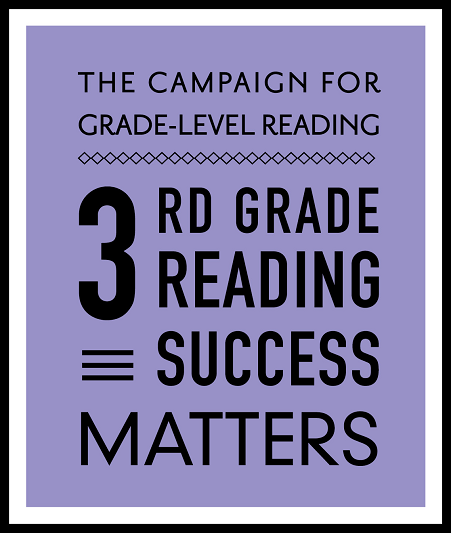Eastside Pathways Pursues National Grade Level Reading Challenge.
 On October 14, Eastside Pathways joined 153 other communities across the U.S. in committing to engage in the Campaign for Grade Level Reading. The Campaign is a collaborative effort by dozens of funders across the nation. The Campaign’s goal is to increase by 50 percent the number of low-income children reading on grade level in 3rd grade in at least a dozen states during the next ten years. The three approaches to meet the goal include:
On October 14, Eastside Pathways joined 153 other communities across the U.S. in committing to engage in the Campaign for Grade Level Reading. The Campaign is a collaborative effort by dozens of funders across the nation. The Campaign’s goal is to increase by 50 percent the number of low-income children reading on grade level in 3rd grade in at least a dozen states during the next ten years. The three approaches to meet the goal include:
- closing the gap in reading achievement that separates many low-income students from their peers
- raising the bar for reading proficiency so that all students are assessed by world-class standards
- ensuring that all children, including and especially children from low-income families, have an equitable opportunity to meet those higher standards.
Participating in the Grade Level Reading Challenge aligns with Eastside Pathways’ mission and goals. Additionally, research commissioned by the Annie E. Casey Foundation entitled “How Poverty & Third-Grade Reading Skills Influence High School Graduation” underscores the need for this focus. In particular, the study found that:
- One in six children who are not reading proficiently in third grade do not graduate from high school on time, a rate four times greater than that for proficient readers.
- The rates are highest for the low, below-basic readers: 23 percent of these children drop out or fail to finish high school on time, compared to 9 percent of children with basic reading skills and 4 percent of proficient readers.
- The below-basic readers account for a third of the sample but three-fifths of the students who do not graduate.
- Overall, 22 percent of children who have lived in poverty do not graduate from high school, compared to 6 percent of those who have never been poor. This rises to 32 percent for students spending more than half of the survey time in poverty.
- For children who were poor for at least a year and were not reading proficiently in third grade, the proportion of those who don’t finish school rose to 26 percent. The rate was highest for poor black and Hispanic students, at 31 and 33 percent respectively. Even so the majority of students who fail to graduate are white.
- Even among poor children who were proficient readers in third grade, 11 percent still didn’t finish high school. That compares to 9 percent of subpar third graders who were never poor.
- Among children who never lived in poverty, all but 2 percent of the best third-grade readers graduated from high school on time.
In Washington State, three organizations submitted letters of interests regarding the Grade Level Reading Challenge: Eastside Pathways, the Community Center for Education Results (CCER) and the City of Anacortes. In our LOIs, Eastside Pathways and CCER committed to working together where practical to share practices and perhaps common efforts.
This year, the National Civic League joined the effort by aligning its 2012 All-American City Awards with the Campaign for Grade Level Reading. Participants—those who submitted a Letter of Intent in October—commit to providing a full plan by March 12, 2012. The plan, which should include participation from sectors such as government, education, business, philanthropy and social service, should address, at a minimum, the campaign’s three priority areas:
The Readiness Gap—addressing quality early learning experiences.
The Attendance Gap—ensuring that chronic absences do not hinder academic success.
The Summer Slide—providing opportunities to sustain learning progress over summer.
Within Eastside Pathways, the work group focusing on Goal 5—Every child is prepared for academic and work success—has agreed to take primary responsibility for developing our proposal to become a 2012 All-American City.

